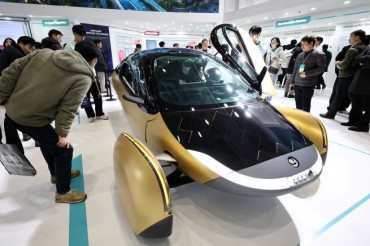
This file photo taken in August 2019 shows a Seoul citizen walking in a public park in southern Seoul. (Yonhap)
SEOUL, Dec. 24 (Korea Bizwire) – A new forecast has shown that by the end of this century, summer will be around for more than half of the entire year unless current levels of greenhouse gas emissions are reduced.
The Korea Meteorological Administration released a report on Thursday that makes a climate forecast for South Korea based on the scenarios stipulated in the sixth assessment report from the U.N. Intergovernmental Panel on Climate Change (IPCC).
If the current levels of greenhouse gas emissions stay constant (SSP 5-8.5), the duration of summer, which lasted for an average of 97 days between the years 2000 and 2019, will jump to 112 days for the early part of this century (2021 to 2040), 131 days for the century’s mid-phase (2041 to 2060), and 170 days for the later part of the century (2081 to 2100).
The report defined the start of summer as the first day when the daily average temperature rises above 20 degrees Celsius and doesn’t fall back down, with winter begining on the first day when the daily average temperature falls below 5 degrees Celsius and doesn’t climb back up.
Winter, with an average duration of 107 days per year, will shorten to 96 days in the early part of the century, 83 days in the mid-part of the century, and 39 days in the later part of the century.
Even if greenhouse gas emissions are drastically reduced to achieve carbon neutrality by 2070 (SSP 1-2.6), the change in the duration of each season will be inevitable.
In a low-carbon scenario, the duration of summer will be extended to 111 days in the early part of the century, 116 days in the mid-part of the century, and 129 days in the later part of the century.
The duration of winter will shorten to 91 days in the early part of the century, slightly recover to 97 days in the mid-part of the century, but again shorten to 82 days in the later part of the century.
The number of days with heatwaves (over 33 degrees Celsius during the hottest part of the day), currently standing at an average of 10 days, is expected to jump to almost 90 days in 80 years.
H. M. Kang (hmkang@koreabizwire.com)






